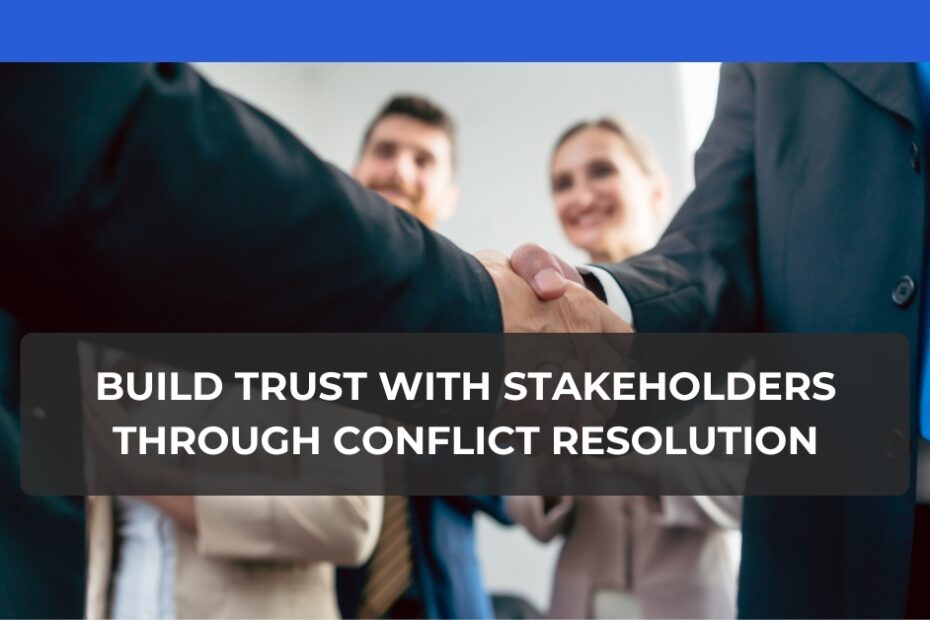Stakeholders are the individuals or groups of people that are directly involved with the organizations. They are affected by every business decision and interest in their success. So, they are the crucial members whom trust is paramount for your organization’s success. In the rapidly developing landscape of IT management, trust is the bedrock of successful collaboration. This blog aims to provide IT managers with strategies to navigate conflicts and emerge with strengthened trust and constructive relationships with stakeholders.
Understanding the Importance of Trust with Stakeholder
Trust with stakeholders is the primary concern in the IT industry. It’s hard to say enough about how important trust is in this complicated world. Collaborations that work well depend on trust, which is what makes conversation, shared goals, and mutual understanding possible. As IT managers work on complicated projects and programs, the trust they build with partners keeps the whole system together. It’s a commitment to open agreements and decision-making and resolve disagreements by working together. Trust is more than just a token of kindness; it’s a valuable asset that moves projects forward, encourages new ideas, and strengthens the basis of long-lasting professional relationships. Recognizing and understanding the complex nature of trust is vital for IT managers to ensure their projects succeed in partner engagement.
Strategies for Building Trust with Stakeholders
To build trust with stakeholders through conflict resolution, IT managers can employ the following strategies:
Active Listening: To gain the trust of stakeholders, IT managers should actively listen to the issues and concerns of the stakeholders. Attentively understanding their problems and other concerns and working to resolve them will help build building trust. This active connection will help companies gain confidence, loyalty, and satisfaction.
For instance, during a project meeting, actively listening to a stakeholder’s apprehensions about a proposed solution validates their perspective and positions the IT manager as a responsive and empathetic leader.
Understand Perspectives: Empathy is crucial in building trust, especially when dealing with challenging stakeholders. By taking the time to understand their perspectives and concerns, IT managers can gain the confidence to solve the issues at hand. For example, if a stakeholder expresses reservations about a change in project direction, IT managers can empathize by acknowledging their perspective and addressing the underlying concerns. This empathetic approach builds understanding and trust between IT managers and stakeholders.
Clear Communication: Communication is open discussions and frequent interactions to discuss every aspect of business to ensure transparency between parties. Implementing transparent and open communication practices is paramount in building and maintaining stakeholder trust. When decisions and actions are communicated transparently, stakeholders feel included in the process, fostering a sense of trust. For instance, providing stakeholders with regular project updates, clearly outlining decision-making processes, and openly addressing challenges contribute to a transparent communication culture that enhances trust and collaboration.
Proactive Engagement: When we engage genuinely with anyone, we gain their valuable trust. Similarly, Proactive engagement with stakeholders is a proactive measure in gaining trust and conflict resolution, nurturing a culture of loyalty and collaboration.
Proactive engagement prevents potential conflicts and shows an image of IT managers as responsive leaders invested in the project’s success and stakeholders’ satisfaction.
Relationship Building: Incrementally building relationships with stakeholders over time is a strategic approach to fostering trust and collaboration. By investing time in understanding stakeholder personalities, preferences, and expectations, IT managers can tailor their approach to suit individual needs. For instance, organizing periodic meetings to discuss both project-related matters and personal interests can strengthen relationships and create a foundation of trust.
Transparency in Disagreements: Transparency is essential in building trust and loyalty. But this transparency will disturb your organization if you keep it on positive results and reasonable agreements. Even during disagreements, maintaining transparency is pivotal in establishing and preserving trusting connections.
For instance, if there is a difference of opinion on project priorities, openly communicating the rationale behind decisions and potential compromises fosters understanding. Transparency in the face of disagreements demonstrates integrity and reinforces stakeholders’ confidence in decision-making.
Continuous Improvement: To build trust, it’s essential to know how vital it is always to look for ways to improve dispute resolution. IT managers are more likely to learn from their mistakes and change how they handle conflicts when they know the process is constantly evolving. For example, reviewing the project after it’s done to see how well conflicts were resolved and using what was learned helps create a setting where things are always getting better.
Final Thoughts
In conclusion, resolving conflicts is only one part of building trust with partners. The main parts of a trust-centered approach are active listening, understanding different points of view, clear communication, proactive engagement, relationship building, being honest when you disagree, and a willingness always to get better. By using these tactics, IT managers can handle disagreements well and build lasting relationships based on trust, teamwork, and success for everyone.
Frequently Asked Question’s
Why is transparency during disagreements considered crucial for trust-building?
Transparency during disagreements is crucial as it demonstrates integrity and openness and helps to gain loyalty. Communicating the rationale behind decisions and potential compromises boosts understanding and reinforces stakeholders’ confidence in decision-making.
What is the significance of continuous improvement in conflict resolution strategies?
Continuous improvement in conflict resolution strategies is significant as it acknowledges that conflict resolution is an evolving process. Learning from experiences and adapting approaches contribute to an environment of growth, ultimately enhancing stakeholder trust.
How can IT managers ensure the success of conflict resolution efforts?
Ensuring the success of conflict resolution efforts involves a comprehensive approach, including active listening, understanding perspectives, clear communication, proactive engagement, relationship building, transparency, and a commitment to continuous improvement. By embracing these strategies, IT managers can navigate conflicts successfully and build enduring relationships based on trust.

